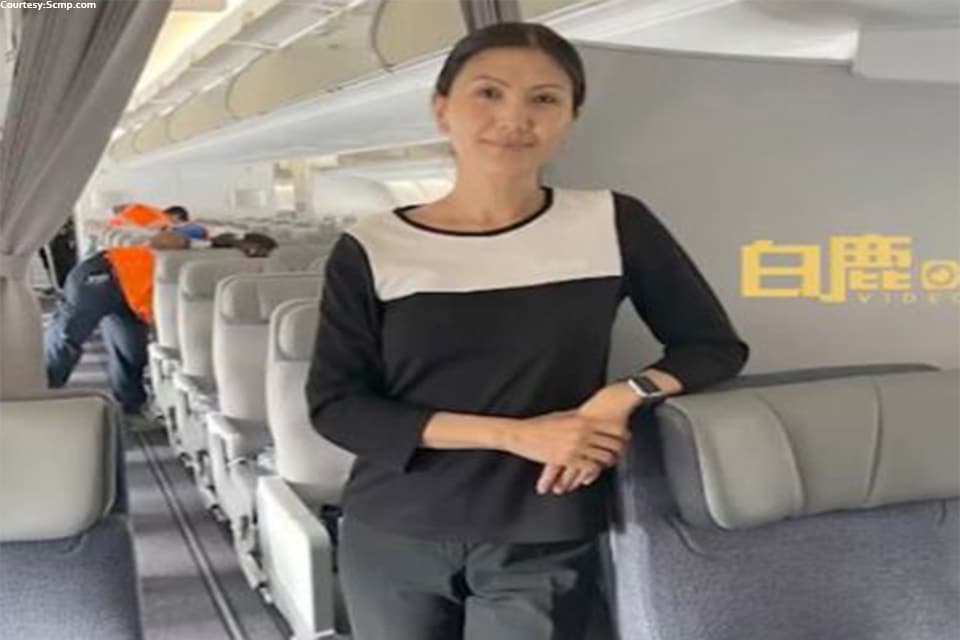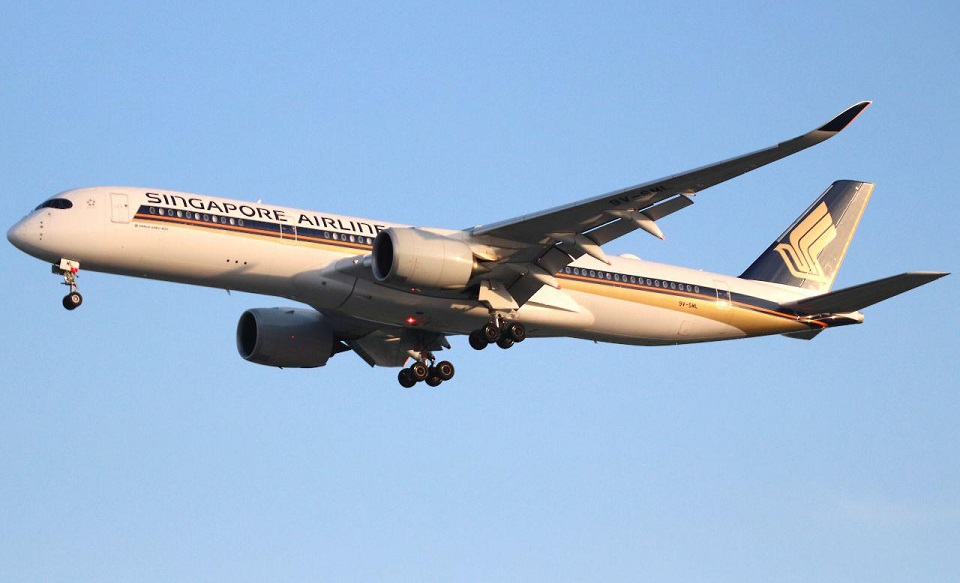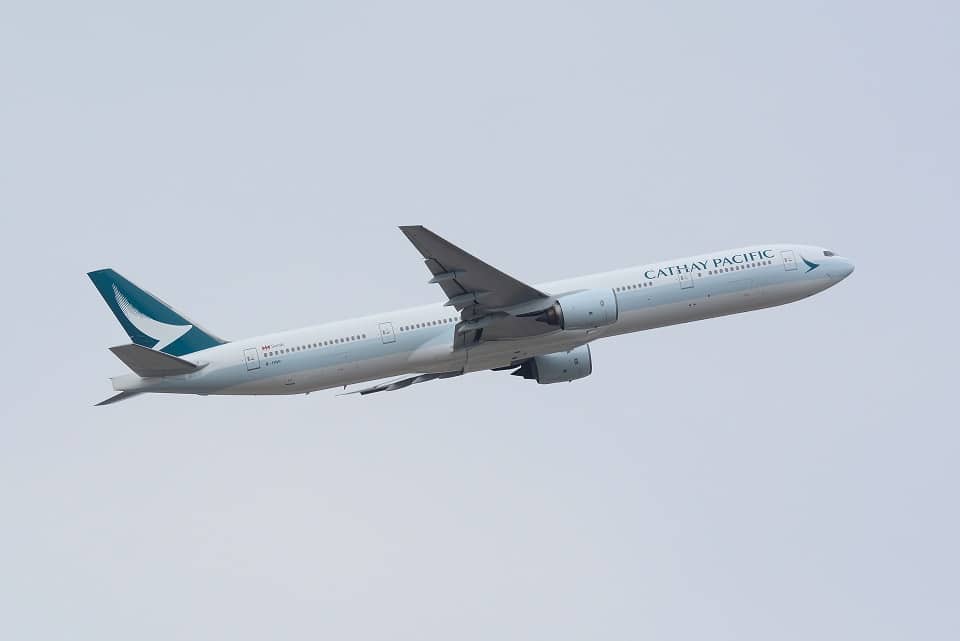Airlines
After working for 6 years Chinese cabin crew fired for being too old

According to recent news, a Chinese flight attendant who was 50 years old was fired because she was “too old” to continue working for the airline. The woman, who has been identified only as Ms. Hu, alleges that the news shocked her because she had worked for the same company for more than six years.
Air India set to allow its pilots to fly until age of 65(Opens in a new browser tab)
After a fired from their job, she started searching for a new job. she also started working on improving her English and also learned Finnish. Ms. Hu was seeking employment outside of the Chinese airline sector because Chinese airlines do not hire women beyond the age of 40.
Interestingly, she became an influence on social media after being fired from her job. She began receiving numerous job offers from three overseas airlines that do not have an employee age restriction. In China, her uplifting tale has gone viral. Discriminatory age laws frequently affect women in China.
In a video that has over 5 million views on the Chinese social media platform Weibo, Ms Hu said, “I exercise routine, and I insist on eating a healthy diet. These are major reasons that I am still able to handle this physically demanding job which requires flying for long hours.”
“What a wonderful life you have! You are a role model for us women!” one person Wrote. Her inspirational story became a topic of discussion on age discrimination in the mainland job market.

Airlines
Singapore Airlines Ordered to Pay $3,580 to Couple over Faulty Seats

Following a dispute over defective seats during their voyage from India to Australia last year, Singapore Airlines (SIA) has been compelled to pay a sum exceeding S$3,500 to an Indian couple.
The District Consumer Disputes Redressal Commission in Hyderabad ruled in favour of Ravi and Anjali Gupta, who on May 23, 2023, had problems with their business class seats that were meant to automatically recline on their flight from Hyderabad to Australia via Singapore.
Reports from media outlets in India highlighted the discomfort experienced by the couple, who were compelled to endure the entire journey without the benefit of reclining seats, despite having paid a significant amount which cost around 66,750 rupees (S$1,090) for each ticket, lodged a complaint during the flight, expressing their dissatisfaction with the situation.
Singapore Airlines initially offered compensation in the form of 10,000 KrisFlyer miles per person, which was declined by the passengers. As reported by CNA, Singapore Airlines apologised for any difficulty the technical failure may have caused and acknowledged the District Consumer Disputes Redressal Commission of Hyderabad’s ruling.
SIA clarified that while the automatic recline feature on Mr. and Mrs. Gupta’s seats experienced a glitch, the manual recline function remained operational during the flight from Hyderabad to Singapore.
Regrettably, due to a fully occupied flight, SIA staff were unable to arrange alternative seating within the business class cabin. However, the airline asserts that its crew diligently monitored the couple’s comfort throughout the journey, offering to manually adjust the seats as needed.
Airlines
Cathay Pacific asks business class customers to bring their own cutlery

In an innovative move towards sustainability, renowned Hong Kong carrier Cathay Pacific has recently floated an unconventional idea to its business class customers.
Bringing their own cutlery sets onboard. This initiative, revealed through a member survey circulated within the airline’s “Cathay Lab” community – a platform comprising frequent business class travelers – has stirred a wave of curiosity within the aviation industry.
With sustainability becoming an increasing concern in aviation, Cathay Pacific’s survey aimed to gauge passengers‘ willingness to partake in various eco-friendly practices during their journeys.
Among the initiatives presented, including refilling reusable water bottles and recycling plastic, the prospect of bringing personal cutlery garnered significant attention. Some members expressed practical concerns, questioning the feasibility of carrying cutlery through airport security and the potential inconvenience for passengers unaware of regulations.
Others suggested that Cathay Pacific should simply provide reusable cutlery onboard instead. Furthermore, there were suspicions among some respondents that the BYO cutlery proposal might be a precursor to introducing additional charges, with one user humorously envisioning a scenario where the airline lends cutlery sets for a fee.
Despite the skepticism surrounding the proposal, Cathay Pacific’s exploration of innovative sustainability measures reflects a broader industry trend towards environmental consciousness.
Airlines
Air India and IndiGo’s Joint Initiative, Plans for 170 Wide-Body Aircraft

In a bold move that underscores their confidence in India’s burgeoning aviation sector, Air India and IndiGo have revealed ambitious plans to acquire a combined total of up to 170 wide-body aircraft.
This strategic investment marks a significant shift in the country’s aviation landscape, as it brings European aircraft manufacturer Airbus into a domain traditionally dominated by American giant Boeing.
With India positioned as one of the world’s fastest-growing aviation markets, the timing couldn’t be more opportune for such expansion endeavors. The aim is clear: to elevate India’s status as a global aviation hub by enhancing connectivity through direct flights between Indian cities and international destinations.
Currently, a substantial portion of India’s international air traffic relies on overseas hubs, particularly in the Gulf region. IndiGo’s announcement of firm orders for 30 A350-900 aircraft, with an option for an additional 70, signals its commitment to capturing a larger share of the long-haul market.
Meanwhile, Air India’s comprehensive order, unveiled last year, encompasses 70 wide-body planes, including a mix of A350 and Boeing 787 models.
Recognizing the potential for disruption in the long and ultra-long haul segments, aviation consultancy CAPA India has emphasized the pivotal role Indian carriers can play in driving innovation and transformation.
With the current combined fleet size of Indian airlines exceeding 700 aircraft, the stage is set for Air India and IndiGo to spearhead a new era of growth and connectivity in the Indian aviation sector.






















